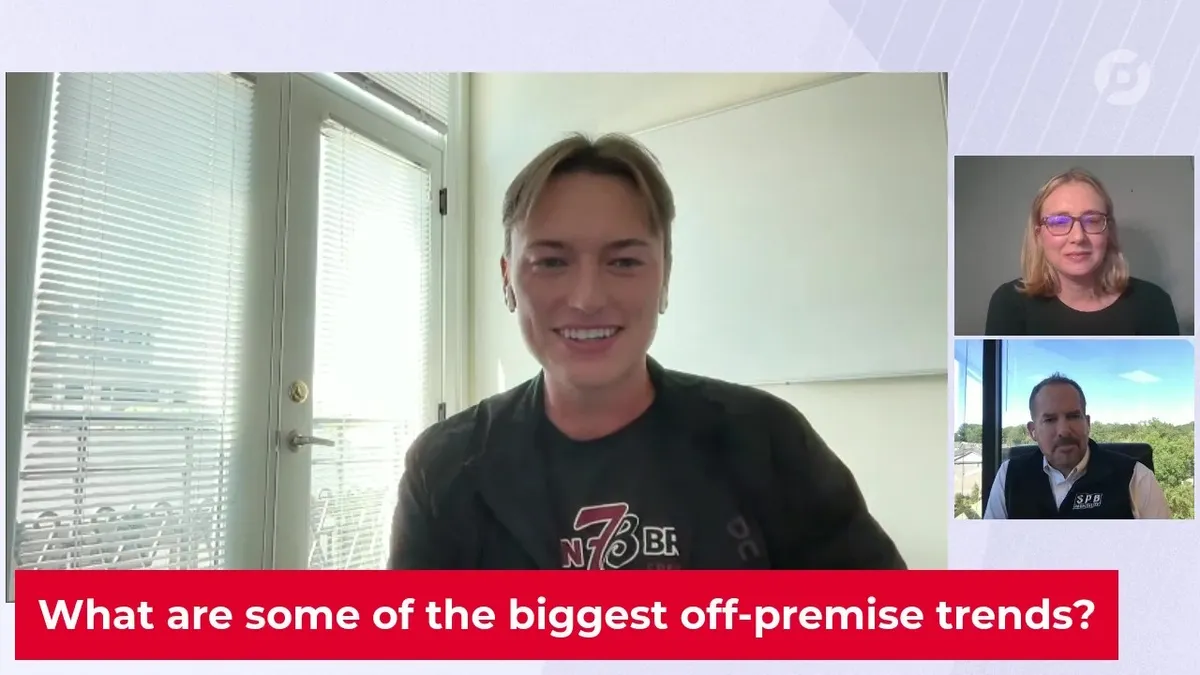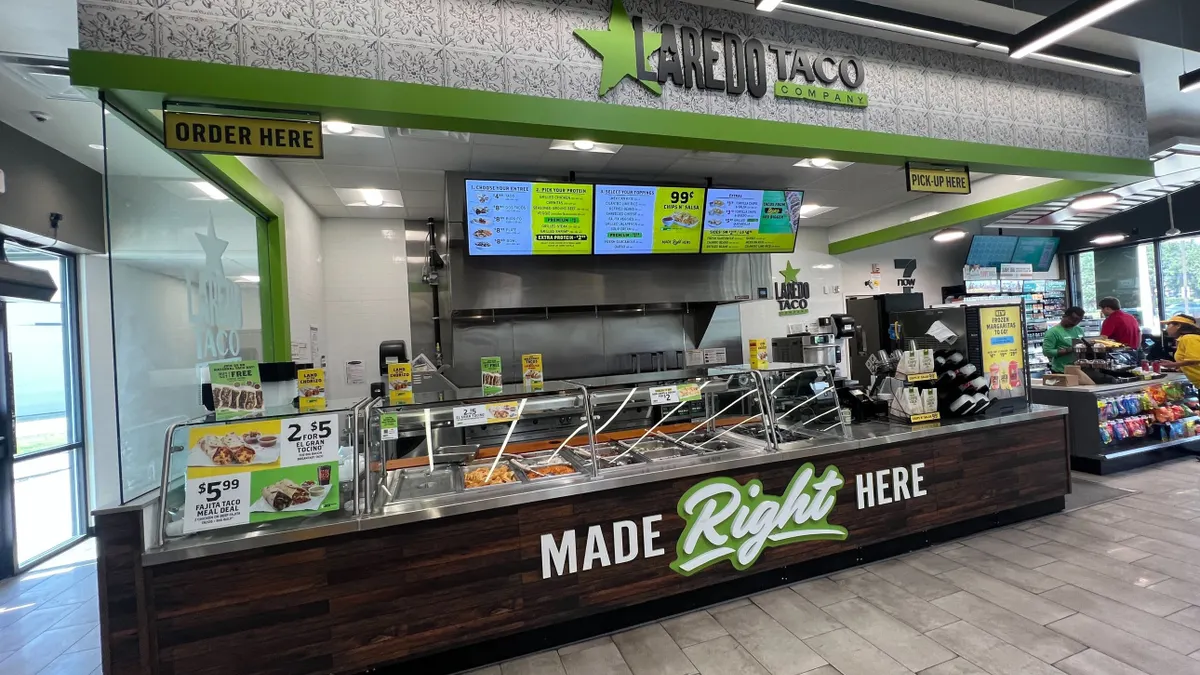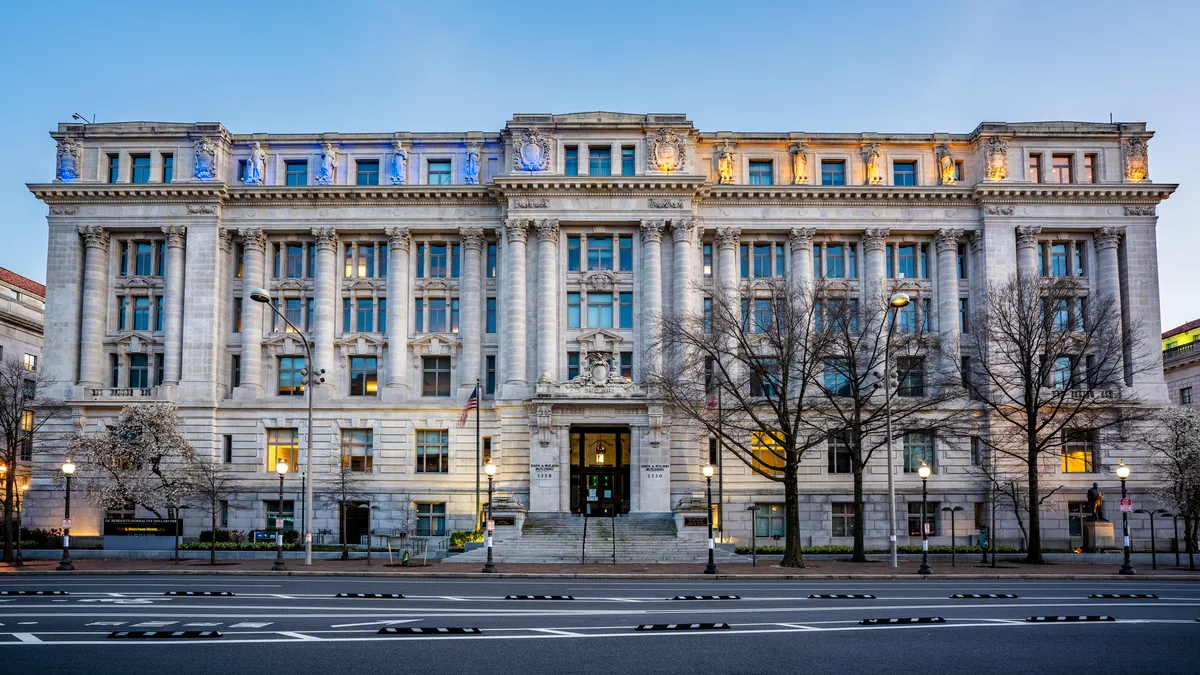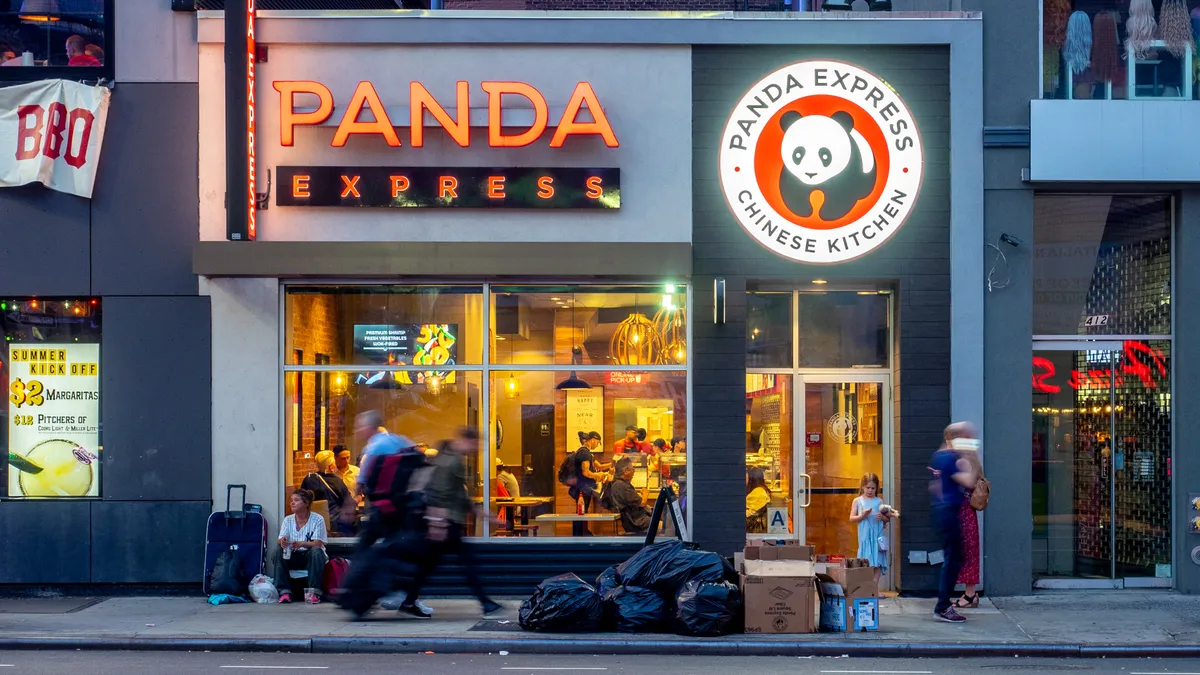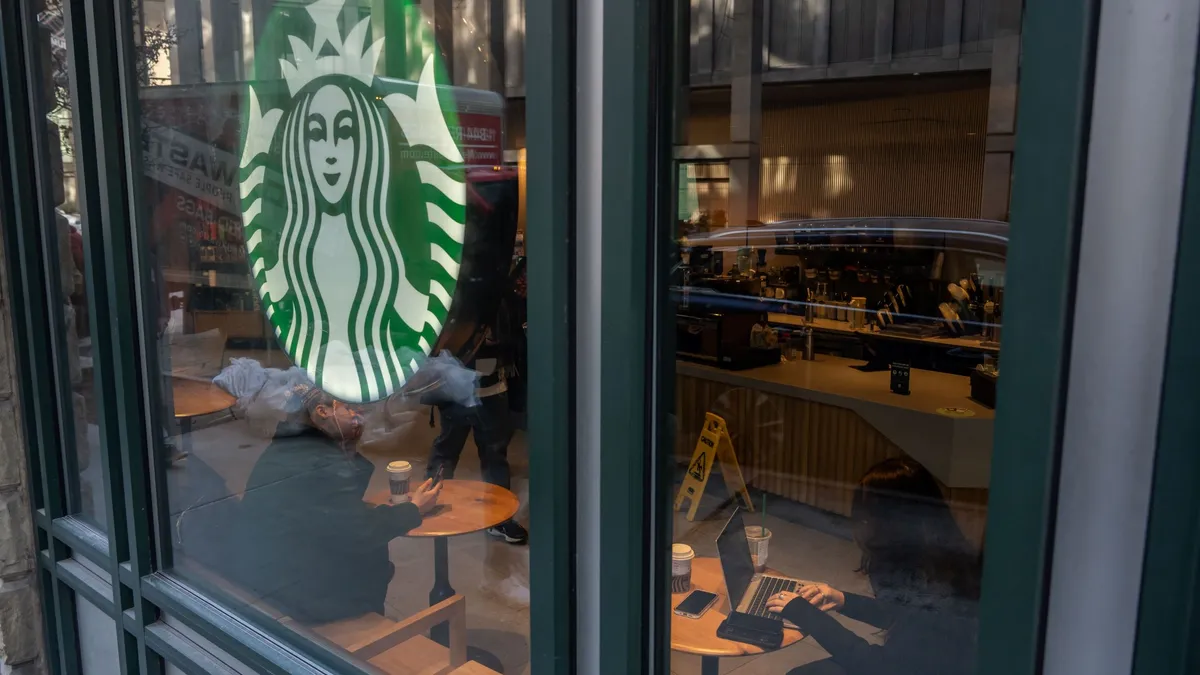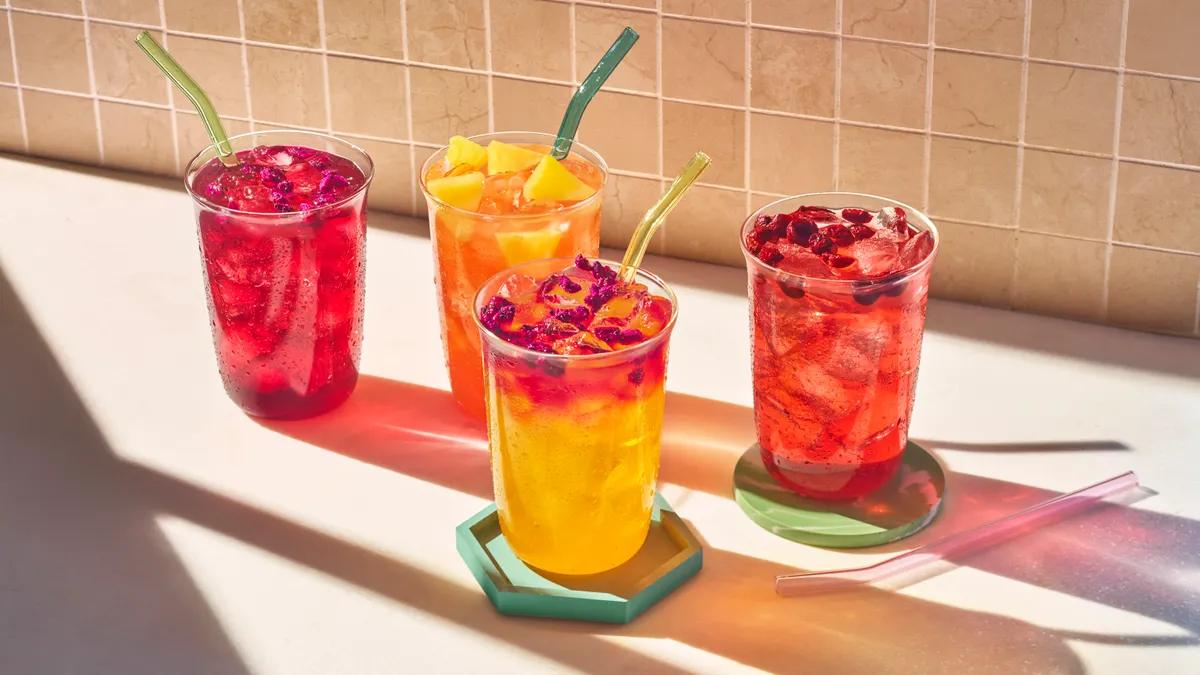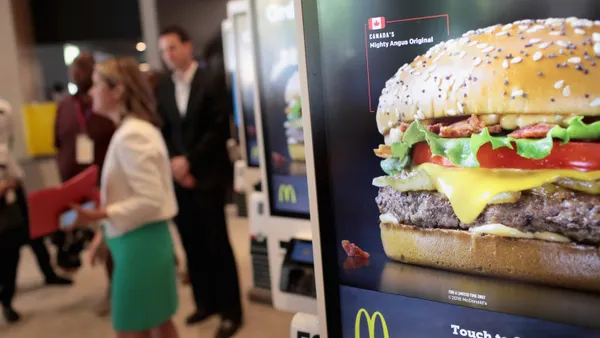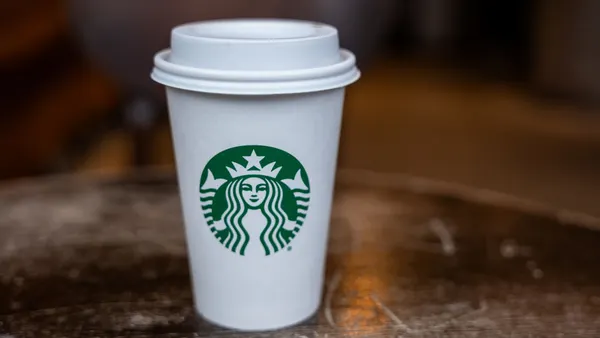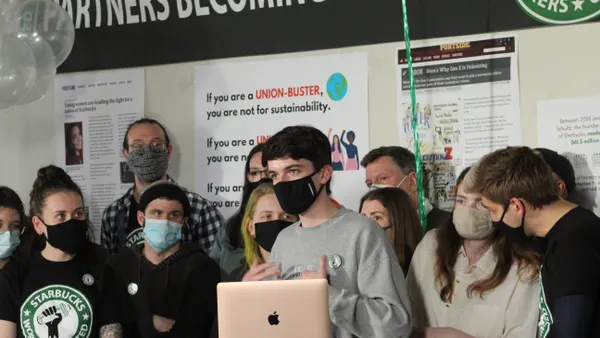Over the last few years, QSR chains from McDonald’s and Del Taco to Jimmy John’s have been designing and building off-premise-only units to meet surging drive-thru demand. Restaurant Dive discussed how these prototypes could shape the future of QSR service with experts last month during its Off-Premise Dining Trends and Risks to Watch virtual event.
“I think this is the wave of the future,” Josh Kern, CEO of SPB Hospitality said during the event. “Everyone’s time is going to continue to be compressed and people are going to want things faster.”
Krystal, one of SPB’s restaurant brands, developed a drive-thru and carryout-only prototype in 2022 that is 1,200 square feet, compared to the brand’s standard 2,700-square-foot restaurant. The smaller stores use 20% less kitchen space than a standard build, as well.
Restaurant designs that eschew dining rooms for more off-premise throughput also save on construction costs, optimize labor and help boost speed of service, said Kern and Nick Newbill, coffee chain 7 Brew’s COO and marketing director. 7 Brew has over 130 drive-thru-only coffee houses, which are 500 square feet and include double drive-thrus and outdoor canopies, across the country.
More diners are trending toward fast and convenient channels instead of dining rooms, Newbill said.
“I am very bullish and I think it’s only going to grow as a category from this day forward,” Kern said.
Opportunity in lower construction costs and access to new markets
7 Brew uses modular construction for its drive-thru-only restaurants, which allows the company to bulk-order materials, create structures and maintain a backlog of buildings that can be rolled out at any time, Newbill said. This helps drive down front-end costs for franchisees and trim the time required to open a new store. 7 Brew has done a handful of stick builds — or traditional, ground-up construction projects — that take about 18 to 20 weeks to build, while modular builds cut that time down to eight to 10 weeks.
“It ultimately allows us to give that time back to our franchise partners,” Newbill said.
Smaller units allow 7 Brew to enter markets and spaces that are high traffic. Its dual drive-thru lanes, which wrap around its buildings, can handle high customer volumes. These modular units also help create marketing buzz — 7 Brew typically uses a huge crane to lower a new restaurant onto a site. These building drops tend to gain media buzz and franchisees typically host events.
“That’s a nice way for us to seed some interest in new markets especially, and allow people to start asking questions about who we are and what we provide,” Newbill said.

Krystal is looking at ways to capture more cost savings and launch smaller units more quickly, because finding real estate remains difficult, Kern said.
“For us, it’s meeting the demand of those real estate developers that are out there that want a much smaller unit, and being able to have that single focus on that drive-thru becomes incredibly beneficial,” he said.
Labor optimization and speed of service
Smaller drive-thru-only units can improve operations and help attract employees, especially since the lack of a dining room reduces worker exposure to crime, Kern said. Compared to its traditional units, Krystal’s drive-thru-only unit needs about 30% less labor, which also improves unit-level economics and makes these restaurants more appealing to franchisees.
Instead of reducing staffing and relying on technology to replace some responsibilities, 7 Brew thinks of its labor model differently. The company stations employees outside to take orders and has staff in the restaurant complete orders.
“We want to use the same amount, if not more, bodies, to become more efficient in the drive-thru lines,” Newbill said.
Without a dining room, employees no longer have to do odd jobs like cleaning tables or refilling ketchup dispensers, freeing them up to focus on order accuracy and speed of service, Kern said.
“That singular focus allows you to get really the right person that’s behind the right stations and that impacts training and that does everything in terms of the overall speed of service,” Kern said.
Technology can help boost that speed, since customers can order ahead on apps and circumvent the order interaction with employees by using the drive-thru’s pickup window, Kern said. With its smaller units, Krystal is also using kiosks to accommodate walk-up customers who may be familiar with Krystal’s traditional units and prefer to eat outside, Kern said.
“The whole point of our drive-thru-only model is to be quick and convenient,” Newbill said. “Customers are in and out of our drive-thru lines exponentially faster than other businesses.”
7 Brew leans into its loyalty program to create a more personalized experience at drive-thru-only locations, especially since staff are able to see a customer’s order history. About 90% of drive-thru orders are associated with the loyalty program. This platform allows for increased customer service, since staff can see the customer’s order history and have conversations about that order, Newbill said.
“That really creates a familial response that people crave in a world that’s limiting some human interaction,” Newbill said. “People sometimes forget to focus on the customer service aspect when you think about drive-thru and that is equally if not more important than the rest of what we’re talking about.”



